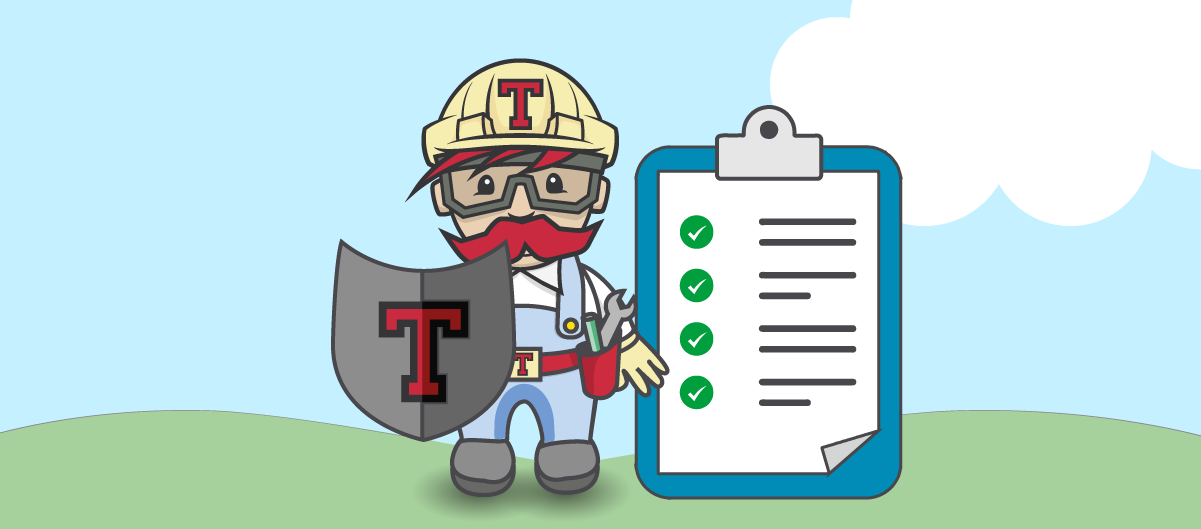Software development often consists of confidential information and code sequences that could put companies in a vulnerable position if leaked into the hands of competitors. CI/CD pipeline security is a necessity during every stage of the development and deployment process. Learn how the best CI/CD security tools can ensure the privacy of your source code, scan for vulnerabilities, and stop breach attempts in their tracks.
CI/CD Security Tools
User Access Controls
A secure CI/CD pipeline requires user access controls. Continuous integration and deployment systems thrive on the convenience of multiple users but need controls in place to maximize protection.
User access controls permit only those who need access to gain entry to important repository files. Software developers can tighten access controls by limiting sensitive information to essential staff only and keeping a comprehensive record of who has access to what.
Static Application of CI/CD Security Scanning
Static analysis tools are a fundamental part of CI/CD security scanning. Users can automate vulnerability scans for code with Travis CI integration. Scripts written by your team need to be scanned for gaps in code that outsiders could potentially access. During the test phase, container scanning tools are especially helpful.
Third-party code segments from modules or libraries can also be scanned with the use of source composition analysis tools (SCA tools). For extra precautionary measures, companies should also assess all devices that have access to the pipeline to ensure that they meet security requirements.
Runtime Security
Runtime security detects active potential threats during the final stages of your continuous deployment process. Application and audit logs, as well as network metrics, contribute to runtime security and allow the detection of threats before they reach an urgent status. By vetting all activities within a container application environment and looking for any activity that violates custom-set rules, you can prevent malicious activity from occurring.
Private Certificates and Encryption Keys
Private certificate authorities allow secure communication between software development team members and can be used to verify different identities using the CI/CD system. An example of implementing a private certificate is using it to ensure the code that is deployed in the production pipeline was written by a trusted source. They can also encrypt and decrypt sensitive data with private encryption keys that authenticate data transmitted during the automated CI/CD pipeline.
Implementing CI/CD Security in Your DevOps
Designate Separate Duties
Define role-based access control privilege policies when starting your software development team or onboarding to a new CI/CD system. Having varying levels of access and user permissions for each employee with designated duties can protect a software company’s reputation and safety.
By reducing access to sensitive information within the CI/CD pipeline, your company reduces the “attack surface.” Fewer people having access minimizes the likelihood of security breaches and makes it easier for supervisors to monitor suspicious activity within logs and reports. The varying levels of access for specific roles encourage increased accountability within your organization. Each person has a clear outline of their tasks and responsibilities, making it easier for your software development team to identify who is responsible for any security mishaps or mistakes in code scripts.
Lock Your Code Repository
A CI/CD security best practice is to privatize source code repositories with passwords and other security measures, such as identity-verifying questions and two-factor authentication. Locking a repository helps with continuous integration security by controlling code changes, enforcing the access controls your company sets, and facilitating compliance with company security standards.
If a change is made to your source code, your project management team will easily be able to locate the source. A helpful practice for establishing a secure CI/CD pipeline is to rotate passwords after each use, confusing the culprits behind any breach attempts and ensuring that if they gain access to the repository once, they likely won’t again.
Learn to Write Secure Code
Travis CI helps software developers to find vulnerabilities in their source code. Our automated CI/CD pipeline tools also simplify code for users, enabling them to achieve the same commands with fewer lines of code. The simpler the code is, the less space there is for vulnerabilities that can allow outsiders to obtain sensitive information about your developing software project.
Simple code results in a secure CI/CD pipeline because it is easier to understand and maintain. When looking for source code vulnerabilities, keep in mind that it’s easier to search a clean and organized room for an object than a messy and chaotic one. Similarly, clean code will enable your team to find any security incidents before they become major problems.
Keep Tabs on Revision History
Regularly watching your revision history to oversee changes made in the source code repository is essential for CI/CD pipeline security. A user activity audit can be generated to monitor these changes, and the best CI/CD security tools will have searchability and filters that make scanning the audit a simple process.
Travis CI goes the extra mile with audit and user log security. Our system censors sensitive information in the open text of build job logs while allowing project leaders to search the log database for proprietary information like passwords, keys, and tokens. Independent scanners can scan build logs immediately after the build is completed, generating a report available to repository administrators. This makes any breaches in security easier to spot and manage, prompting project leaders to investigate the source of the abnormal activity.
Maximize CI/CD Security with Travis CI
Travis CI has 24/7/365 security monitoring to ensure the privacy and protection of users on our CI/CD server. Maximize your continuous integration security for your builds with our vulnerability scanning tools, code simplification features, user access controls, build job logs, log scan, live support chatline, and more. Get in touch with us to start a subscription-based membership to the best CI/CD security tools available for the building, testing, and deployment of your software projects.

